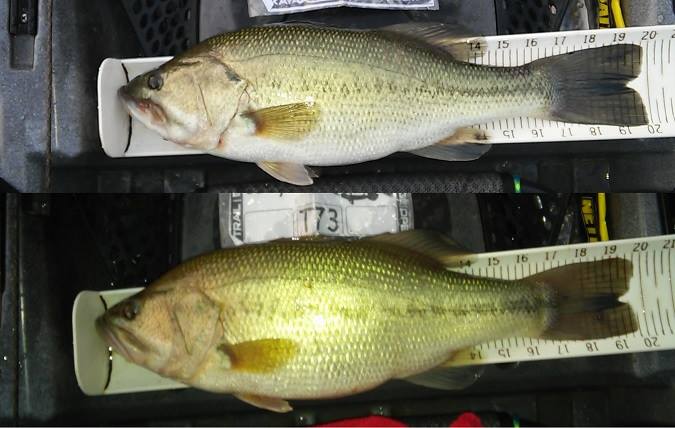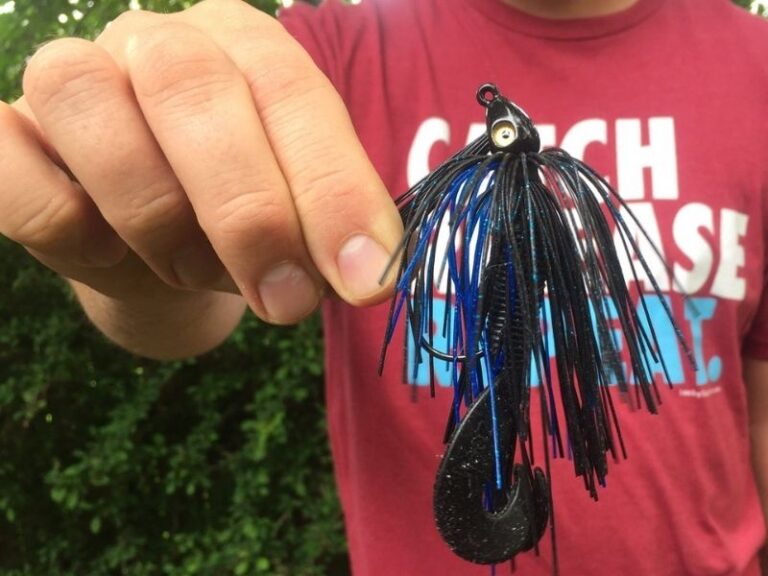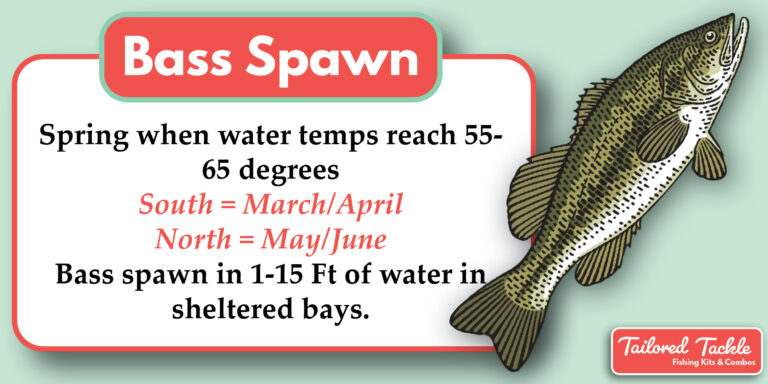How Long Does a Bass Have to Be to Keep?

The minimum length to keep a bass varies by location and species. Regulations often require bass to be at least 12 to 18 inches.
Anglers know that the thrill of catching a bass is matched only by the importance of responsible fishing practices. Wildlife agencies set size limits to ensure healthy fish populations, and these can differ between states and even specific bodies of water.
Bass fishing regulations are essential for conservation. They protect juvenile fish, allowing them to grow and reproduce before they can be harvested. For the avid fisher, it’s crucial to check local rules before heading out. These regulations are designed not just to sustain the sport but also to balance the ecosystem. Every responsible angler contributes to the longevity of the sport by adhering to these guidelines, preserving the thrill of the catch for generations to come.
Size Regulations For Bass Conservation
Size regulations are crucial for bass conservation. Different states have varied rules. It is vital to know your state’s regulations. Generally, the minimum size limit for keeping bass is 12 inches. This rule helps protect young bass. By doing so, we ensure that bass populations remain healthy.
Fishermen must release bass shorter than the limit. The goal is to allow these juvenile bass to grow. They will have a chance to reproduce. It increases the chances of maintaining a strong bass population.
State-specific Fishing Laws
Fishing laws vary from state to state. A bass length limit protects young fish. This allows them to grow and reproduce. Anglers must know these rules before fishing. It ensures the bass population stays healthy. Without these laws, bass could become very scarce. Check local guidelines before you fish.
Each region has its own minimum size requirements. These can change based on research. Conservation efforts dictate these legal lengths. Some places may allow smaller bass to be kept. Others may require them to be larger. You could face a fine if you keep a bass that is too small.
Laws can be found on state wildlife websites. Sometimes they are at local bait shops. Always update yourself with the latest bass size regulations. This ensures you enjoy fishing responsibly and sustainably.
Ecological Impact Of Size Limits
Setting minimum size limits for bass helps sustain fish populations. It ensures only mature bass are kept. These fish have likely spawned at least once. Their offspring will continue the species. This practice aids in maintaining a balanced ecosystem.
- Bass that reach maturity contribute to genetic diversity.
- A robust population controls prey species levels.
- Larger bass improve fishing quality for anglers.
Limiting harvest size allows for better aquatic health. A thriving bass population limits overpopulation of smaller species. This prevents resource depletion. Keeping larger fish leads to a more stable aquatic environment.
Measuring Bass Correctly
To measure a bass correctly, you need precise tools. A reliable fishing ruler or tape measure is vital. Make sure it’s flexible enough to curve with the fish’s body. This helps avoid underestimating the size.
Multi-function tools that combine measurement with weight are also useful. They ensure that you can record both without releasing the fish prematurely.
Many anglers make simple mistakes that affect accuracy. Always lay the fish flat against the ruler, not angled.
Ensure the mouth is closed for a true measure. Start from the lower jaw, measuring straight to the tail’s tip. Do not measure from the side, as this can add extra length. Remember, each state has its own legal size limits. Always measure thoroughly to ensure legal compliance.
Penalties For Non-compliance
Fishing regulations can vary by location. It is vital to know these rules. Breaking these rules can lead to fines or even legal action. Educate yourself to avoid accidental rule-breaking. Be sure to measure your bass correctly. Keeping bass shorter than legal size is illegal.
Check for updates on regional fishing regulations. This ensures you stay within the law. Knowledge and preparation are key to reducing unintentional violations.
Best Practices For Responsible Fishing
Responsible fishing ensures future generations will enjoy the sport. Catch and release is key. It keeps fish populations healthy. Anglers should learn proper catch and release techniques. These skills help fish survive after being caught.
Use barbless hooks to minimize injury. Handle fish with wet hands or use gloves. This helps protect their slime coat. Keep the fish in water as much as possible. Reducing air exposure is crucial. Avoid touching the gills or eyes. Use tools like pliers for hook removal.
Release the fish gently. Support the fish in the water, allowing it to swim away on its own. Doing this maintains fish health and keeps the ecosystem balanced. Practicing these steps makes fishing a sustainable hobby.
Frequently Asked Questions
What Is The Smallest Bass You Can Keep?
The smallest legal bass size varies by region; always check local regulations before keeping. Many areas impose a minimum catch size of 12 inches.
What Size Bass Is A Keeper?
The keeper size for bass varies by location and species; typically, a largemouth bass must be at least 12 inches, while other areas and species may have different regulations. Always check local fishing laws before keeping a bass.
How Many Inches Do You Need To Keep A Largemouth Bass?
To legally keep a largemouth bass, you generally need one that measures at least 12 inches, though regulations may vary by location. Always check local fishing regulations for current size requirements.
What Is The Limit On Bass In Texas?
The bass limit in Texas varies by water body, but generally, for largemouth and smallmouth bass, the state-wide daily bag limit is five fish with a 14-inch minimum length.
Conclusion
As we wrap up our discussion on the legal size for bass, remember regulations protect aquatic ecosystems. Each state’s guidelines dictate the minimum length for a keeper bass. Always check local rules before your fishing trip. By adhering to these standards, we ensure healthy populations for future anglers to enjoy.
Let’s continue to fish responsibly and sustainably.


